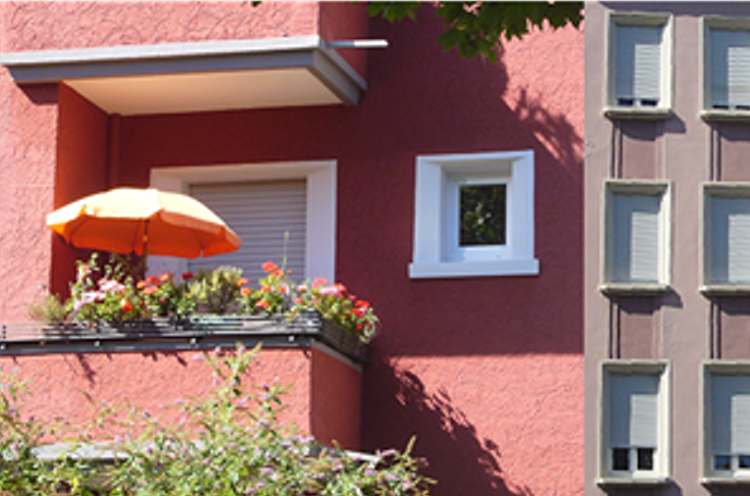Recognize health-threatening heat islands in the city
| Photo: Tina Kunz-Plapp/KIT |
The temperatures within a city and, thus, also the temperature differences to the surrounding area, which are described by the term of the urban heat island, are strongly influenced by the urban density, the sealing degree of the ground as well as the presence or lack of green areas.
For a better understanding of the climatic conditions in a city as well as the differences within an urban area, high resolution measurements are required. Within the Project „Stadtklima im Wandel“, which is funded by the Federal Ministry of Education and Research several intensive measurement campaigns for several months are performed in Berlin, Hamburg and Stuttgart with IMK-TRO participation. By means of various measurement methods, the air and surface temperatures, the water content of the atmosphere, the wind fields as well as the concentrations of various air pollutants are thereby quantified.
Also, the city of Karlsruhe offers itself for investigations into the urban heat island, as it is located in the warmest region of Germany, where temperatures of more than 35°C regularly occur in summer. Such high temperatures can burden city dwellers and cause health problems (Kunz-Plapp et al., 2016). Knowing exactly which areas within the city have particularly high temperatures can help to plan and implement suitable heat adaptation measures. This applies both to urban planning measures, measures on buildings such as the installation of roller shutters and awnings, as well as personal coping strategies of each resident such as adapted drinking behavior or shifting activities into cooler times of the day to protect against heat stress or at least mitigate.
So it is possible to identify building structures and residential areas that are less suitable, for example, for building a hospital or retirement and nursing homes because of the expected heat stress. Urban planners and architects can also better recognize in which parts of the city the topic of summer heat protection is more important in order to focus on the shading and solar protection elements or the house insulation.
For more details, have a look at the ESKP-special topic “Metropolises under pressure (in german)”:
https://themenspezial.eskp.de/metropolen-unter-druck/stadtklima-verbessern/waermeinseln-in-der-stadt-erkennen/
Further literature:
- Hackenbruch, J. (2018): Anpassungsrelevante Klimaänderungen für städtische Baustrukturen und Wohnquartiere. Wissenschaftliche Berichte des Instituts für Meteorologie und Klimaforschung des Karlsruher Instituts für Technologie, Band 77, KIT Scientific Publishing, Karlsruhe, doi: 10.5445/KSP/1000080685, Link.
- Hackenbruch, J.; Schulwitz, M.; Hagemann, R. (2017): Hitze in städtischen Quartieren. Messergebnisse der Karlsruher AERO-TRAM und die Implikation für die Stadtplanung: Transforming cities, 2017 (1), 58-62.
- Kunz-Plapp, T., Hackenbruch, J., und J.W. Schipper (2016): Factors of subjective heat stress of urban citizens in contexts of everyday life. Nat. Hazards Earth Syst. Sci., 16(4), 977–994, Link.
[Working group: Regional Climate and Water Cycle]

